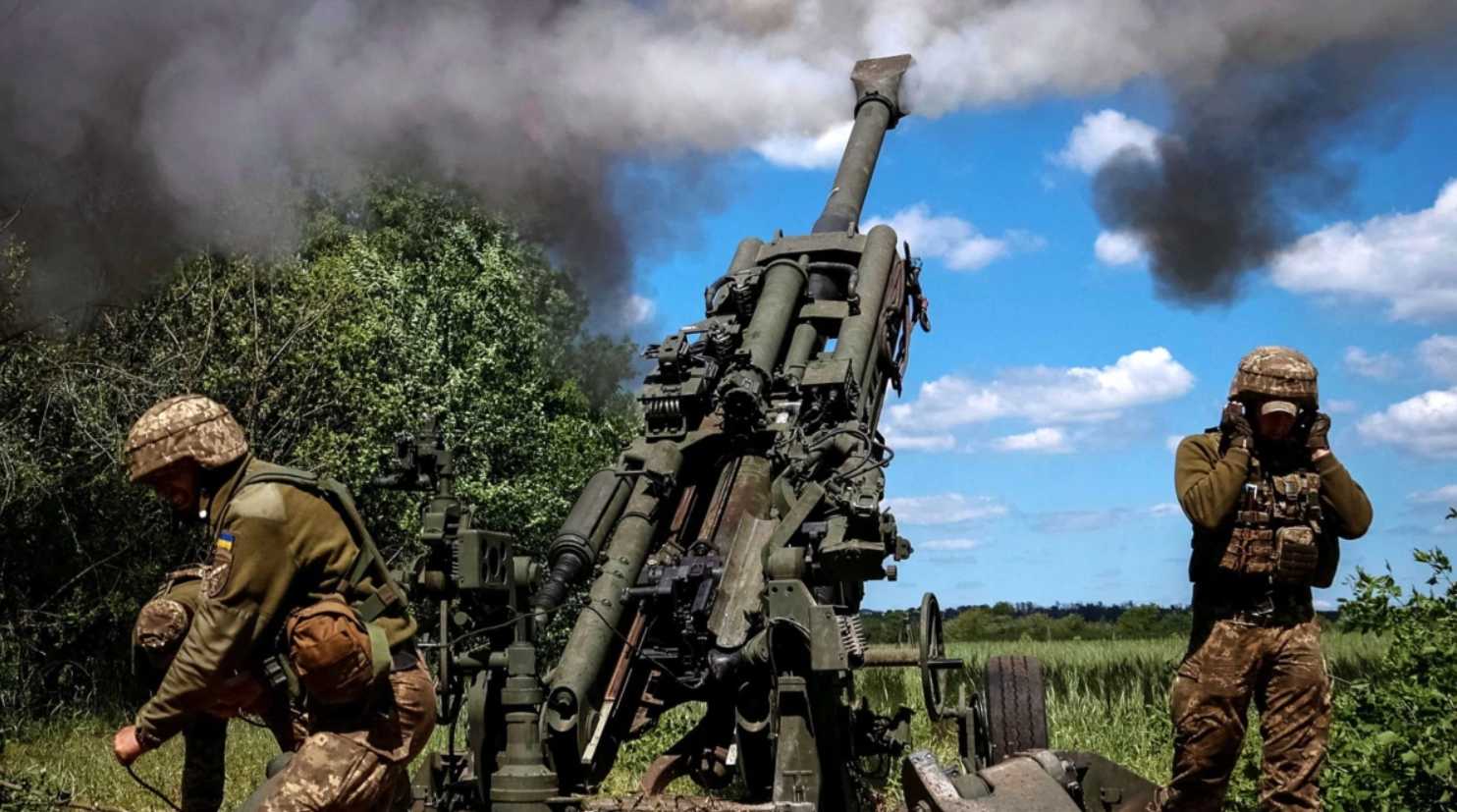The British-made long-barrelled battlefield M-777 howitzers gave a lifeline to Ukrainian soldiers when the ammunition of its Soviet-era guns started running low.
In a war where both sides brought their big guns and pounded each other with thousands of artillery shells, the big guns started having lots of wear and tear, and its GPS-guided Excalibur shells lost their precision in the face of Russian electronic warfare.
Despite this, the production line for the M-777 howitzers will whir back to life as BAE Systems signs a contract with the US Army for supplying the lightweight guns.
The BAE Systems announced that the deal is limited to US $ 50 million and “allows BAE Systems to start delivering on the Howitzer program while finalizing the details of the contract and its total value with the customer.” The contract “presents optimum conditions for a likely restart of the M777 production.”
The first deliveries are planned in 2025. BAE Systems said renewed interest from across Europe, Asia, and the Americas in the M777 gun system.
“This restart of production of the major structures for the US Army’s M777s comes at a critical time, with howitzers deployed on operations in Ukraine,” said John Borton, vice president and general manager of BAE Systems Weapons Systems UK.
The Russian-Ukraine war has been a grinding artillery war, with both sides bringing out their big guns. Every day, the Ukrainian military used advanced guns provided by the US and its allies to fire thousands of explosive shells at targets in Russia. The West has donated roughly 350 artillery guns to Kyiv.
NATO-standard howitzers that fire 155-millimeter shells became some of Ukraine’s most important weapons when the ammunition for its Soviet-era guns, which fire shells 152 millimeters in diameter, grew scarce shortly after the invasion. This was because Kyiv’s partners held vast stockpiles of compatible shells.
According to the most recent count of US military assistance to Ukraine, the Pentagon has dispatched 142 M777 howitzers to the country, which is sufficient to outfit around eight battalions. With them, Ukrainian forces have been able to launch small-scale antitank minefields, target command centers with precisely guided rounds, and assault enemy forces with bursts of 155-millimeter shells.
The gun, largely made of Titanium, is lighter than steel but just as robust, making it easier to move across the battlefield and set up more quickly than previous weapons. Its M-982 Excalibur artillery shells, with GPS guidance, displayed remarkable precision in hitting Russian targets.
“This is probably the most dangerous part of the delivery. These Excalibur munitions are equipped with a seeker and can adjust their flight path upon approaching the target. They are GPS-and intertidal-guided,” a Donetsk People’s Republic Militia (DPR) spokesperson had earlier said.
The smaller size of these projectiles posed a challenge for Russian air defense systems and made it hard for Russian forces to target and counter them effectively.
Slipping Advantage Of M-777s
However, as the war progressed, the Russians got the upper hand in the artillery warfare. According to Oryx, an independent team of analysts gleaning information from open-source intelligence on equipment losses, estimated that about 77 of these howitzers have been damaged or destroyed since the start of the war.
The M-777 is a towed gun, making it less maneuverable in the face of the enemy’s counterfire. The lightweight Titanium body also makes it more vulnerable to damage from shrapnel.
But, as reported by the Eurasian Times earlier, the biggest jolt to the M-777 has been the advancement of Russian electronic warfare that left the GPS-guided Excalibur shells without their much-touted accuracy.
The Russians developed the Pole-21 system to counter high-precision weapons and other adversary systems reliant on satellite navigation by jamming and suppressing signals from navigation satellites. The system disrupts the ability of enemy missiles, bombs, aircraft, and other systems to accurately determine their coordinates, thereby hindering the successful execution of their designated missions.

A New York Times report also highlighted how the guns had started giving problems when the US deployed them against the Islamic State. Before this, the guns boomed in Iraq and Afghanistan in the early 2000s. Unlike in Ukraine, the troops fired smaller numbers of shells in Iraq and Afghanistan.
During five months of supporting combat operations in Raqqa in 2017, a Marine artillery battery from Camp Lejeune, equipped with four M777 guns, fired over 23,000 rounds of 155-millimeter ammunition, which is nearly 55 times the number of rounds that a typical battery of that size would typically fire in a year of peacetime training.
This resulted in extreme wear of the gun, and three of the howitzers had to be removed and replaced with reserve weapons kept in Kuwait.
The media reports point out that the excessive use of guns in Ukraine resulted in the M-777 burning out after months of overuse or being damaged or destroyed in combat. This wear and tear means that a third of the Western-made howitzers donated to Kyiv are out of action at any given time.
- Ritu Sharma has been a journalist for over a decade, writing on defense, foreign affairs, and nuclear technology.
- She can be reached at ritu.sharma (at) mail.com
- Follow EurAsian Times on Google News